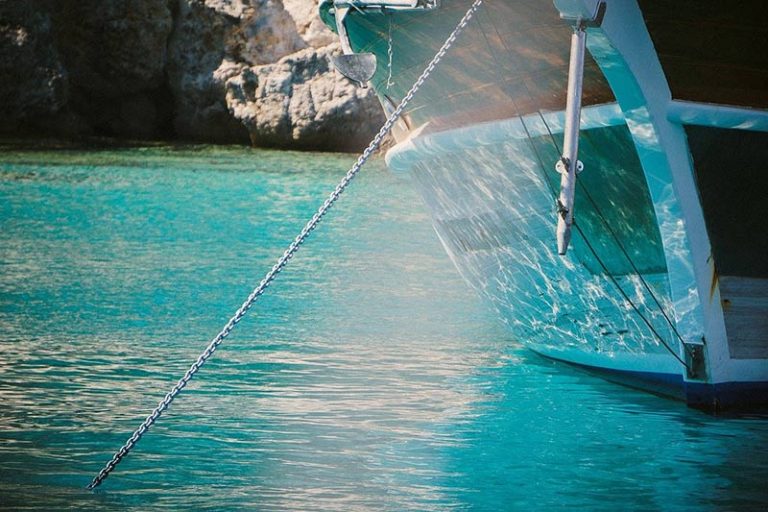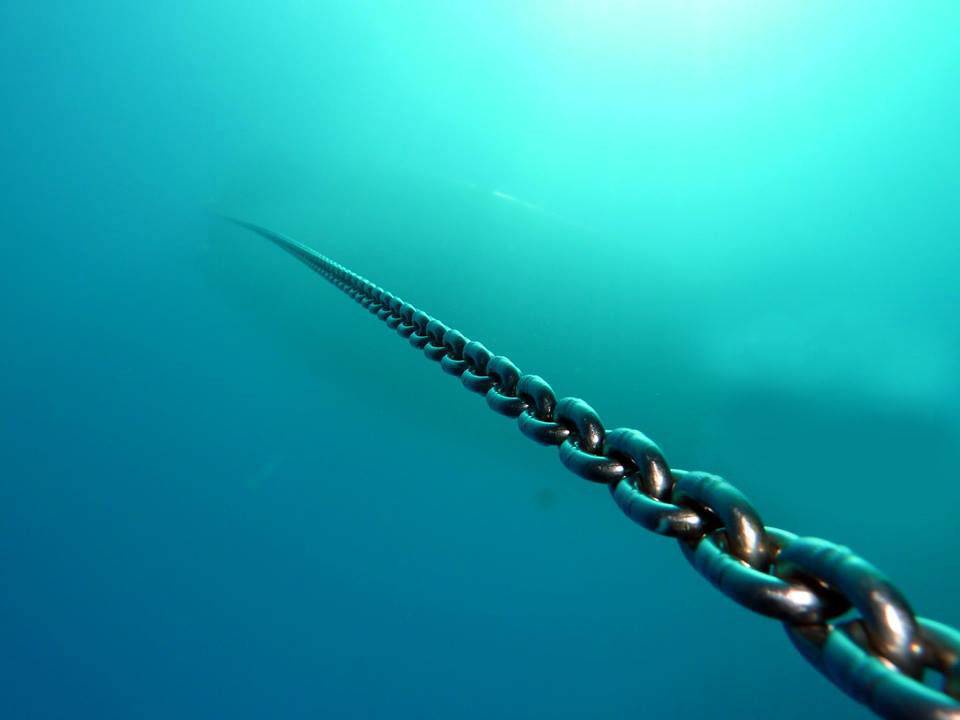Here’s how to weigh anchor and what trick to use to free our fouled anchor
Generally, it’s not a complicated maneuver, especially in the absence of wind. However, some precautions must be taken, and if we end up hooking some chains – which isn’t difficult in crowded anchorages – here’s how to get out of it.
 We’ve decided it’s time to set sail. The first thing to do is follow the instructions of the person at the bow who will tell us how the chain is oriented, if and how much engine power to use. The propulsion matter is important. Moving forward a few meters will allow us to release tension from the chain and therefore reduce strain on the windlass.
We’ve decided it’s time to set sail. The first thing to do is follow the instructions of the person at the bow who will tell us how the chain is oriented, if and how much engine power to use. The propulsion matter is important. Moving forward a few meters will allow us to release tension from the chain and therefore reduce strain on the windlass.
When the anchor is fouled in light wind conditions, if we don’t want to use forward gear, we can exert traction on the chain by operating the windlass but only a few meters at a time, then stop, wait for the boat to move forward on the chain releasing tension thanks to the previously applied traction, before starting again with the electric windlass. Continuous traction would put excessive strain on the windlass risking damage.
Pay attention to the anchor locker dimensions. If the anchor well is deep enough, the chain will descend into it properly without creating problems.
If it’s a shallow locker, the chain will pile up under the windlass base and end up jamming or even causing the links to jump off the gypsy with the risk of the entire chain running out to sea.
To avoid any issues, we must stop the operation every couple of meters of raised chain, spread the chain under the windlass by hand or with a boat hook, then resume the operation.

It may happen that during this maneuver we hook someone else’s chain or line with our anchor. There are devices available on the market that can make our life easier, but in this case, a line and a boat hook will be more than sufficient to get us out of trouble.
It’s sufficient to operate as shown in the drawings.

Then take a line and secure one end to a cleat and make a loop on the other end, lowering it until it meets the chain under which our anchor is caught.
With the boat hook, catch the loop making sure our line passes under the chain creating a bight. Once the loop is brought aboard, tighten the line as much as possible and secure it to a cleat.
Now we can pay out some scope and thus free our anchor securing it to the bow roller. To free ourselves completely, we just need to untie one end of the line used to lift the chain which will then fall back to the bottom.
Engine on and away we go. Naturally from Marina Porto Antico!


